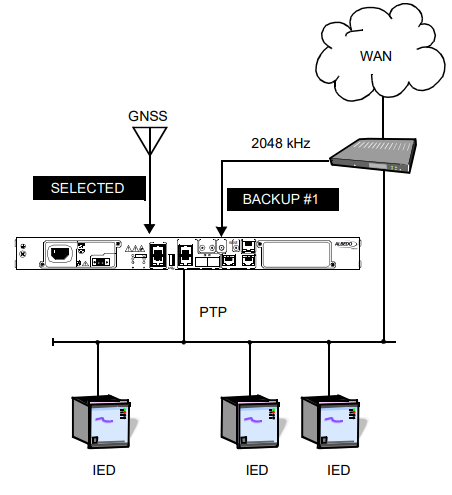Using the Time Holdover Function
The frequency holdover or partial holdover function is an example of how frequency references could be used in phase & time synchronization. This Net.Time feature provides nanosecond accuracy for a long time when GNSS or PTP references are lost.
BARCELONA - JULY 2022
Clock references are typically classified in two families, frequency and time. While frequency references are highly accurate they lack of the information required to determine the time in a given timescale. This property limits the application of frequency references where availability of UTC or TAI time is important.

Fig 1. Using a frequency backup reference derived from the WAN.
From the previous paragraph we could conclude that frequency references are not useful in time distribution deployments but this is not truth. Frequency references are still very useful in many scenarios. One interesting approach is to derive the frequency in a device or system from a frequency reference (Synchronous Ethernet, for example) and to use a time reference to set the time. PTP or GNSS could be used for this purpose. This document deals about a second interesting application based on using a frequency reference to extend the holdover period of a network clock. The most typical example of this is a clock with unstable GNSS reception due to la weak signal, intentional jamming or other reason. Clocks equipped with OCXOs may generate a phase error of tens of microseconds per day which is out of the specification of several important timing applications. If a frequency reference is available, it can be useful to keep the stability of the OCXO in periods where the GNSS reference is lost. The performance level it can be achieved with this technique depends on how accurate is the backup frequency reference but it should be possible to extend the holdover for periods of several weeks with an error level of less than one microsecond.

Fig 2. When the main reference is lost, the backup is selected.
One of the advantages of this approach is that frequency references are often readily available. For example, SDH / SONET networks are themselves synchronous and an accurate frequency of 2048 kHz or 1544 kHz can be derived from the network interface. In more modern deployments based on Ethernet and MPLS-TP there is still the possibility to propagate an accurate frequency through the network with Synchronous Ethernet.


